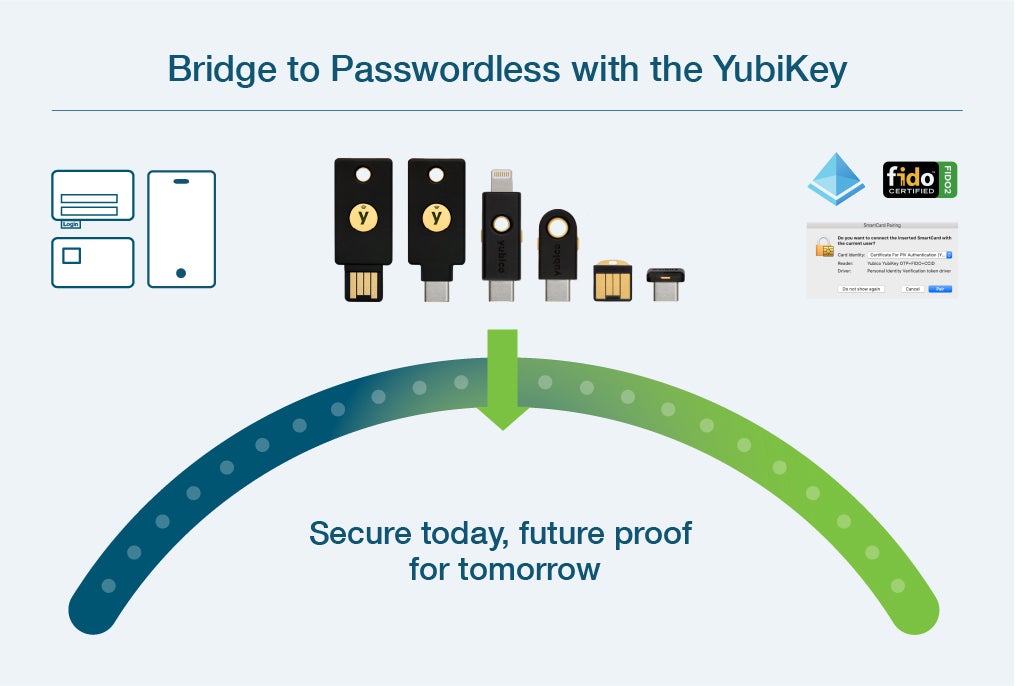How To Deploy YubiKeys: A Comprehensive Guide For Enhanced Security
In today's digital age, securing sensitive information is more crucial than ever, and using YubiKeys is an effective way to bolster your online security. YubiKeys are hardware authentication devices that provide an additional layer of security for user accounts, significantly reducing the risk of unauthorized access. This article will guide you through the process of deploying YubiKeys, ensuring that you understand their importance and how to implement them effectively.
As cyber threats continue to evolve, traditional username and password mechanisms are no longer sufficient to protect sensitive data. YubiKeys utilize two-factor authentication (2FA) to add an extra layer of security, making it considerably harder for attackers to gain access to accounts. This article will cover everything you need to know, from understanding YubiKeys to step-by-step deployment instructions.
By the end of this guide, you will have a firm grasp of how to deploy YubiKeys in your organization or for personal use, ensuring that your digital assets remain secure. Let’s dive into the world of YubiKeys and discover how they can enhance your security posture.
Table of Contents
- What are YubiKeys?
- Why Use YubiKeys?
- Types of YubiKeys
- How to Deploy YubiKeys
- Best Practices for Using YubiKeys
- Common Issues and Solutions
- Conclusion
What are YubiKeys?
YubiKeys are physical security keys designed to provide secure authentication for various online services, applications, and devices. They typically connect via USB or NFC (Near Field Communication) and utilize various authentication protocols such as FIDO2, WebAuthn, and U2F to ensure secure access. Their compact design makes them portable and easy to use, allowing users to carry them wherever they go.
Why Use YubiKeys?
Implementing YubiKeys as part of your security strategy offers several benefits:
- Enhanced Security: YubiKeys provide an additional layer of protection against phishing attacks and credential theft.
- Simplicity: Users can authenticate quickly by simply inserting the YubiKey into a USB port or tapping it on an NFC-enabled device.
- Multi-Protocol Support: YubiKeys support various authentication protocols, making them versatile for different platforms and services.
- Durability: Built to withstand daily wear and tear, YubiKeys are durable and reliable.
Types of YubiKeys
Yubico offers several types of YubiKeys to cater to different user needs. Here are two popular options:
YubiKey 5 NFC
The YubiKey 5 NFC is a versatile security key that supports both USB-A and NFC connections. It is compatible with a wide range of services and protocols, making it ideal for users who require flexibility in their authentication methods.
YubiKey 5C
The YubiKey 5C features a USB-C connector, making it suitable for modern devices. It supports multiple authentication protocols and is designed for users who prefer a USB-C connection for their devices.
How to Deploy YubiKeys
To successfully deploy YubiKeys, you should follow these key steps:
Pre-Deployment Considerations
- Assess Your Needs: Determine which accounts and applications require YubiKey deployment based on sensitivity and security requirements.
- Choose the Right YubiKey: Select the appropriate YubiKey model based on compatibility with your devices and services.
- Budgeting: Consider the costs associated with purchasing YubiKeys for your organization or personal use.
Step-by-Step Deployment
Here’s a straightforward process to deploy YubiKeys:
- Purchase YubiKeys: Acquire the necessary YubiKeys based on your assessment.
- Create User Accounts: Ensure all users have accounts on the services they will be securing with YubiKeys.
- Register YubiKeys: Instruct users to register their YubiKeys with each service. This typically involves logging into the service and following the prompts to add a security key.
- Test Authentication: Verify that the YubiKeys work correctly by logging into the services using the registered YubiKeys.
- Educate Users: Provide training and resources to users on how to use YubiKeys effectively.
Best Practices for Using YubiKeys
To maximize the effectiveness of YubiKeys, consider the following best practices:
- Backup Keys: Maintain a backup YubiKey in case the primary key is lost or damaged.
- Regularly Update Security Settings: Review and update security settings periodically to ensure optimal protection.
- Educate Users About Phishing: Train users to recognize phishing attempts to prevent unauthorized access.
Common Issues and Solutions
While YubiKeys are generally reliable, users may encounter some common issues:
- Key Not Recognized: Ensure the YubiKey is properly inserted or positioned for NFC connections.
- Service Compatibility: Verify that the service being accessed supports YubiKey authentication.
- Forgotten Registration: Instruct users to keep track of which YubiKeys are registered with which accounts.
Conclusion
In conclusion, deploying YubiKeys is a proactive step towards enhancing your digital security. By following the guidelines outlined in this article, you can effectively implement YubiKeys in your organization or for personal use. The added layer of protection they provide is invaluable in today’s threat landscape.
If you found this article helpful, please leave a comment below, share it with others, and explore our other resources on cybersecurity.
Penutup
Thank you for reading! We hope you found this guide on how to deploy YubiKeys informative and useful. Remember, securing your digital assets is an ongoing process, and staying informed is key to maintaining a robust security posture. We look forward to seeing you again on our site!
Mellstroy Net Worth 2024 In Dollars: A Comprehensive Analysis
Exploring Barry Keoghan's Nationality And Ethnicity
Exploring Rihanna's Family Background: A Deep Dive Into Her Roots

